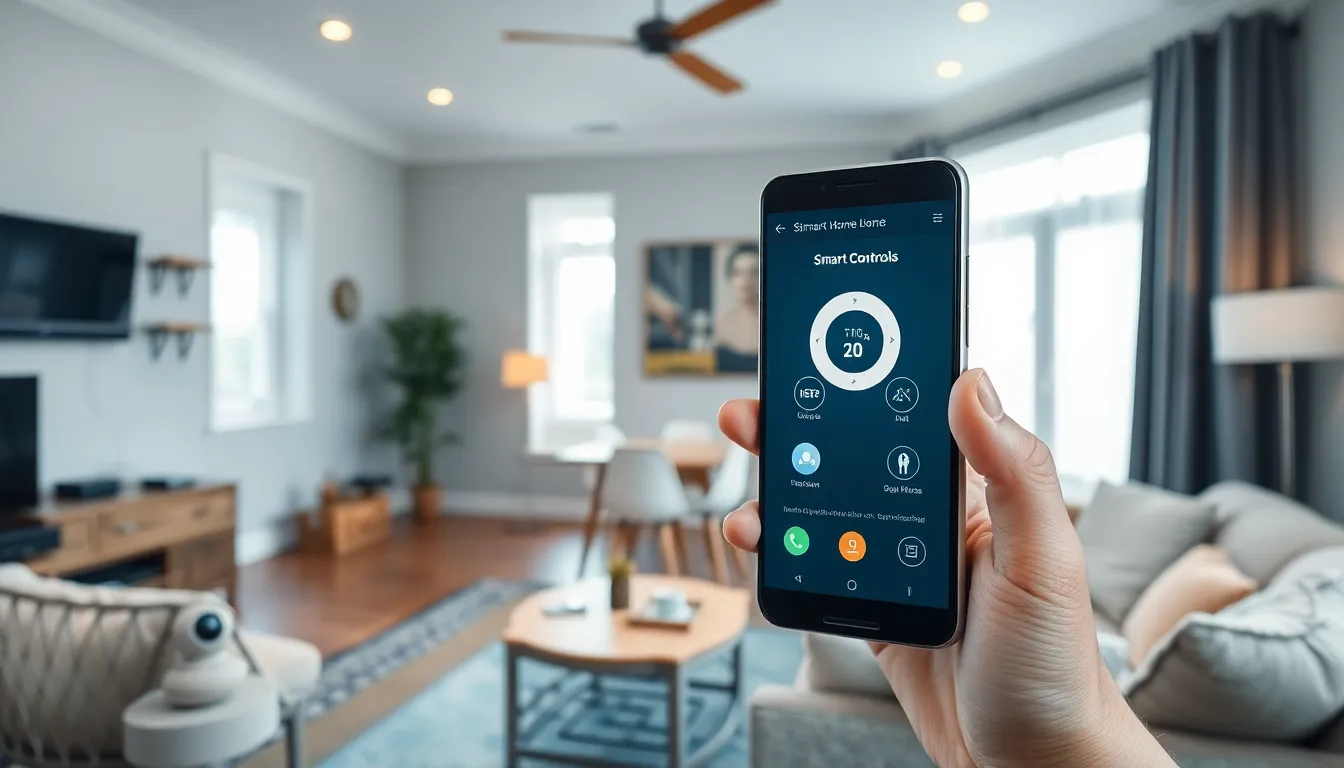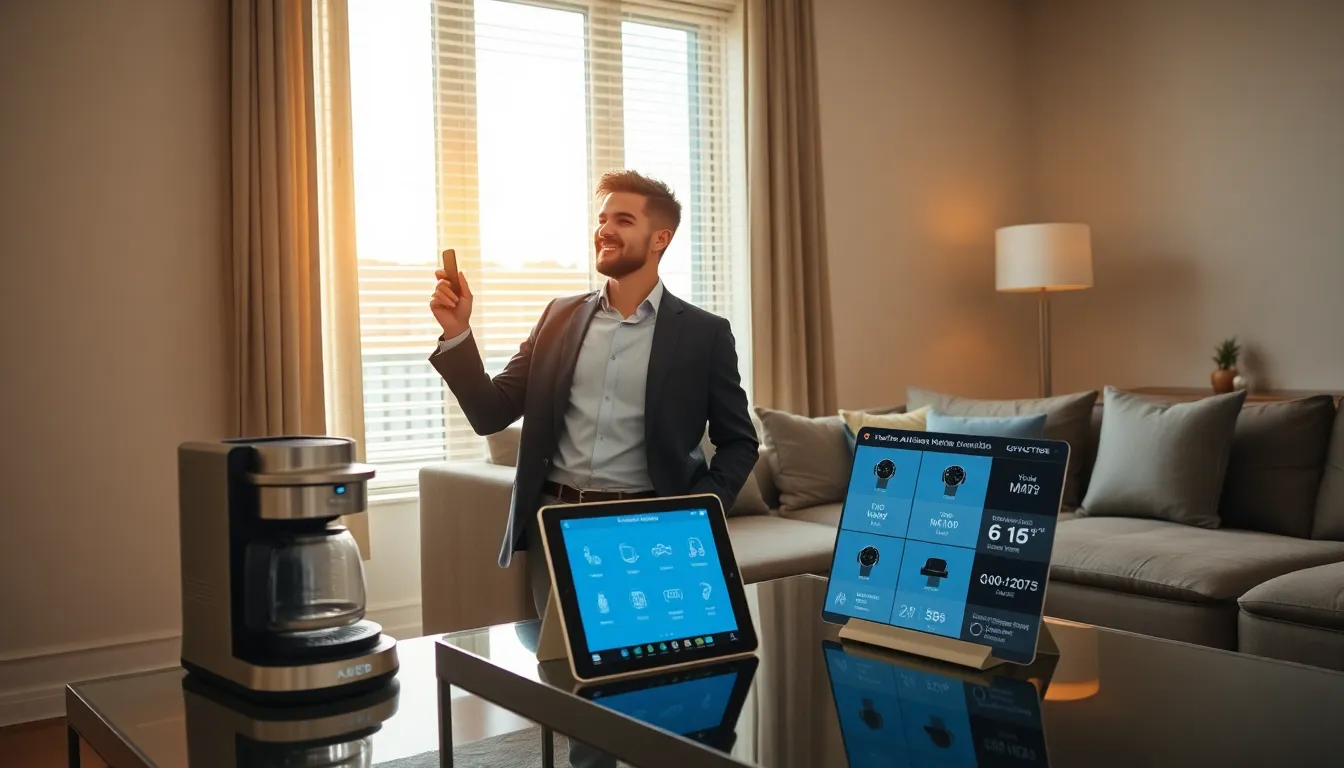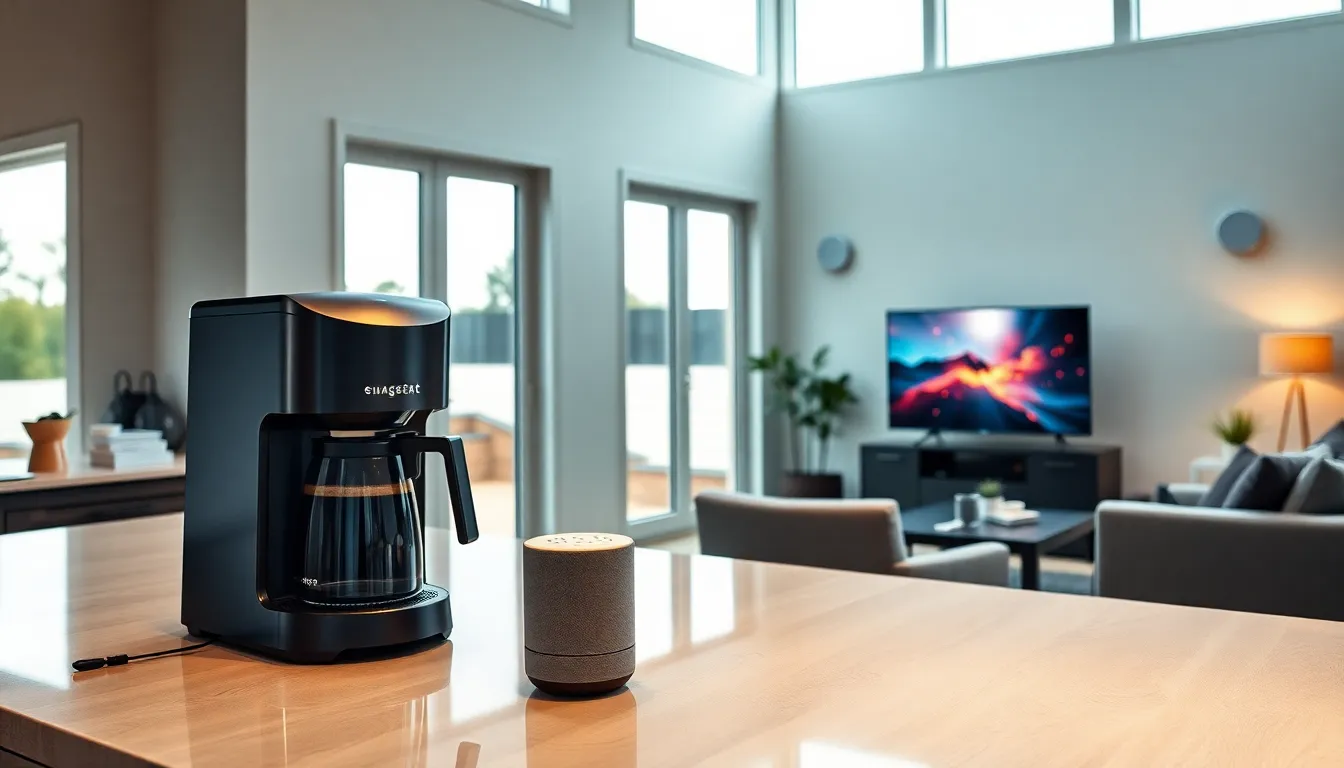Imagine walking into your home and having the lights dim, the thermostat adjust, and your favorite playlist start playing—all without lifting a finger. Sounds like something out of a sci-fi movie, right? Welcome to the world of smart home installation, where technology transforms everyday living into a seamless experience.
Table of Contents
ToggleOverview of Smart Home Installation
Smart home installation integrates various devices, transforming traditional homes into automated environments. This process involves setting up systems that enable users to control appliances remotely. Popular options include smart thermostats, security cameras, and lighting controls. Installation may require professional assistance, depending on complexity.
Homeowners often benefit from a mobile app, allowing control from smartphones or tablets. These apps provide features such as scheduling, monitoring, and real-time alerts. Security systems enhance safety by notifying users of unusual activities. Comfort increases with automated climate adjustments.
The installation process typically begins with planning the layout of devices. Assessing existing infrastructure helps determine compatibility. Necessary equipment may include smart hubs, sensors, and compatible devices. Researching brands and models ensures a selection that meets specific needs.
Several challenges accompany the installation of smart home devices. Network connectivity issues can disrupt functionality. Ensuring a robust Wi-Fi network is vital for seamless integration. Additionally, privacy concerns arise with connected devices, prompting users to secure their networks.
Smart home technology continues to evolve, leading to innovative solutions. Voice assistants from leading companies facilitate hands-free control of devices. Automation increases energy efficiency through scheduling and remote monitoring. Overall, smart home installation enhances convenience, security, and energy savings.
Benefits of Smart Home Installation

Smart home installation offers numerous advantages that significantly improve daily living. Users experience enhanced convenience and security through the integration of technology into their households.
Increased Convenience
Smart home systems streamline daily tasks, allowing homeowners to control lights, temperature, and appliances from anywhere. Remote access via mobile apps simplifies management, making routine functions effortless. Scheduling options enable automatic adjustments, catering to individual preferences. Voice commands further enhance user experience, offering hands-free control. Automated systems also provide energy monitoring, helping users reduce their bills. This seamless functionality contributes to an overall easier lifestyle for everyone involved.
Enhanced Security
Smart home installation significantly boosts home security measures. Surveillance cameras and alarm systems allow homeowners to monitor their properties in real-time. Alerts sent directly to mobile devices provide immediate notifications of unusual activities. Smart locks offer keyless entry, reducing the risk of unauthorized access. Integration with other devices enhances monitoring capabilities, creating comprehensive security networks. Users gain peace of mind, knowing they can keep track of their homes from any location.
Key Components of a Smart Home
Smart homes feature various components that work together to create a cohesive automated environment. Key systems provide improved energy efficiency, security, and convenience to users.
Smart Lighting
Smart lighting systems allow users to control indoor and outdoor lights via apps or voice commands. These systems utilize energy-efficient LED bulbs that can change colors, dim, or turn on and off remotely. Scheduling options enhance functionality, enabling homeowners to set specific times for lights to operate. Integration with motion sensors also adds convenience, where lights activate automatically when someone enters a room. Some systems support remote access, ensuring users can illuminate their homes from anywhere.
Smart Thermostats
Smart thermostats provide precise control over home heating and cooling systems. Users can adjust temperature settings remotely, resulting in energy savings. These devices learn user schedules, optimizing temperature based on patterns and preferences. With integration into smart home networks, users receive real-time energy reports, helping track consumption. Compatibility with multiple systems exists, ensuring seamless operation regardless of existing infrastructure.
Smart Security Systems
Smart security systems enhance home protection through advanced technology. Users benefit from real-time alerts, surveillance cameras, and motion detectors. Mobile apps facilitate remote monitoring, allowing users to view live feeds from anywhere. These systems often feature smart locks for keyless entry, optimizing convenience and safety. Integration with alarm systems ensures comprehensive coverage, responding promptly to unusual activities or intrusions.
Installation Process
The installation process for a smart home involves several critical steps, from planning to execution. Understanding each stage ensures a successful transformation into an automated living space.
Planning and Design
Successful installation begins with careful planning and design. Mapping out device placement maximizes functionality and convenience. Assessments of existing infrastructure are essential to identify any necessary upgrades. Consideration of compatibility between devices and the user’s home network streamlines the integration process. Smart home goals should also drive the design phase, ensuring that the system meets specific needs for convenience, security, and energy efficiency.
DIY vs. Professional Installation
Choosing between DIY installation and professional services impacts the integration experience. DIY might suit tech-savvy individuals comfortable with installation processes. They can save costs while customizing setups. However, professional installation often ensures a thorough and efficient configuration. Experts in smart home technology can address potential issues, like network connectivity and device compatibility. Weighing the complexity of the chosen system against personal expertise helps determine the best approach for installation.
Common Challenges and Solutions
Smart home installations often encounter various challenges impacting the user’s experience. Network connectivity issues frequently arise, affecting device communication. To address this, strengthening the home’s Wi-Fi network enhances the reliability of connections. Using a mesh Wi-Fi system ensures coverage throughout the residence.
Compatibility between devices may also present hurdles. Users should verify that smart devices can work together seamlessly. Researching device compatibility prior to purchase facilitates smoother integration. Consulting with installation professionals ensures all components function harmoniously.
Privacy concerns regarding data security are prevalent among users. Implementing strong passwords and enabling two-factor authentication minimizes potential risks. Regular software updates for smart devices protect against vulnerabilities, thus enhancing security.
Complex installation processes can overwhelm inexperienced users. DIY installations may not suit everyone, particularly with complicated systems. Hiring professionals can simplify this process, ensuring each device is installed correctly and configured efficiently.
Energy consumption awareness is another concern with smart home technology. Users may fear that increased automation leads to higher energy bills. Utilizing smart energy monitoring tools, like thermostats and lighting systems, provides real-time insights into usage patterns. These tools support informed decisions for reducing energy waste.
Lastly, user adoption of new technology can pose challenges. Resistance to change often hinders full utilization of smart features. Educating homeowners about the benefits of automation encourages acceptance and maximizes efficiency. Through training sessions or accessible resources, users gain confidence in navigating their smart environments.
Smart home installation represents a significant shift in how individuals interact with their living spaces. By integrating various technologies homeowners can achieve unparalleled convenience and security. The ability to control and monitor devices remotely not only enhances daily life but also promotes energy efficiency.
As technology continues to advance the potential for smart homes will only grow. Homeowners who embrace these innovations will enjoy a more streamlined and secure living environment. With careful planning and consideration of challenges any homeowner can successfully transition to a smart home system that meets their needs.






